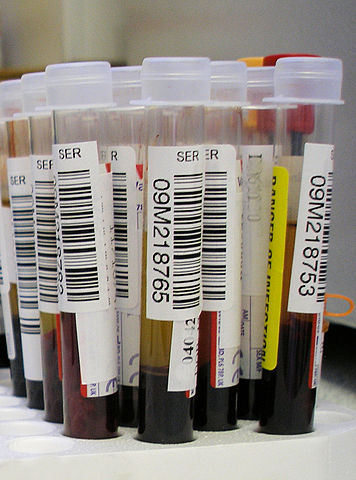The Vile Vial

On Halloween, 1992, a young Canadian woman only known publicly as Candice was raped. Her attacker drugged her with midazolam, a powerful anesthetic which, among many side effects, leaves the recipient temporarily paralyzed and may cause some amnesia. But that second side effect didn’t take hold in Candice’s case, and she remembered the event, and was able to identify her assailant as her doctor, John Schneeberger. As Schneeberger expected her to not remember anything, he didn’t take steps to remove any physical evidence linking him to the crime, making it trivial for investigators to get a DNA sample from the assailant. Investigators in Saskatchewan took a blood sample from Schneeberger and, given the other evidence, had a slam dunk case against the physician. There was only one problem.
The DNA wasn’t a match.
Candice requested a re-test in 1993 and the police obliged and took a new blood sample from Schneeberger. But despite Candice’s now-dubious sounding account, the test, again, came back negative. Authorities closed the case. But make no mistake, Schneeberger was a rapist and, indeed, had raped Candice. He’d even confess to it.
As a doctor, Schneeberger had access to something most of us don’t — other people’s blood. And he was trained in how to use it, or in this case, misuse it. Schneeberger took a sizeable blood sample from one of his male patients and set it aside for later use. That later use is what CBC News called “a gruesome act of skulduggery;” Schneeberger cut open his arm and inserted a vial of the misappropriated blood inside. When the technicians went to take a blood sample, Schneeberger offered to do it for them, and they agreed. He drew blood from the hidden vial, providing someone else’s DNA. Not once, not twice, but apparently, three times, the last one coming in 1996.
He would have likely gotten away with it, too, but being a sexual predator, he didn’t stop at just one victim. Eventually, he was linked to another sexual assault (according to his Wikipedia entry, that victim was his 15 year old stepdaughter), and police took DNA samples from his hair as well. Finding a match, he was convicted of two rapes and ended up serving four years (yes, only four years) in prison. After his release, the Zambian-born doctor was stripped of his Canadian citizenship — he had lied during the naturalization process — and was deported to South Africa.
Bonus fact: Coincidentally, there is a town in Saskatchewan — Tisdale, population 3,180 (2011) — that is known as the “Land of Rape and Honey.” If you visit, don’t worry — the mention of “rape” is a reference to “rapeseed,” not sexual assault.
From the Archives: Getting High Off Others’ Blood: Another crazy use.
Related: A bottle of fake blood. Looks like the real thing; won’t fool any DNA tests, though.
